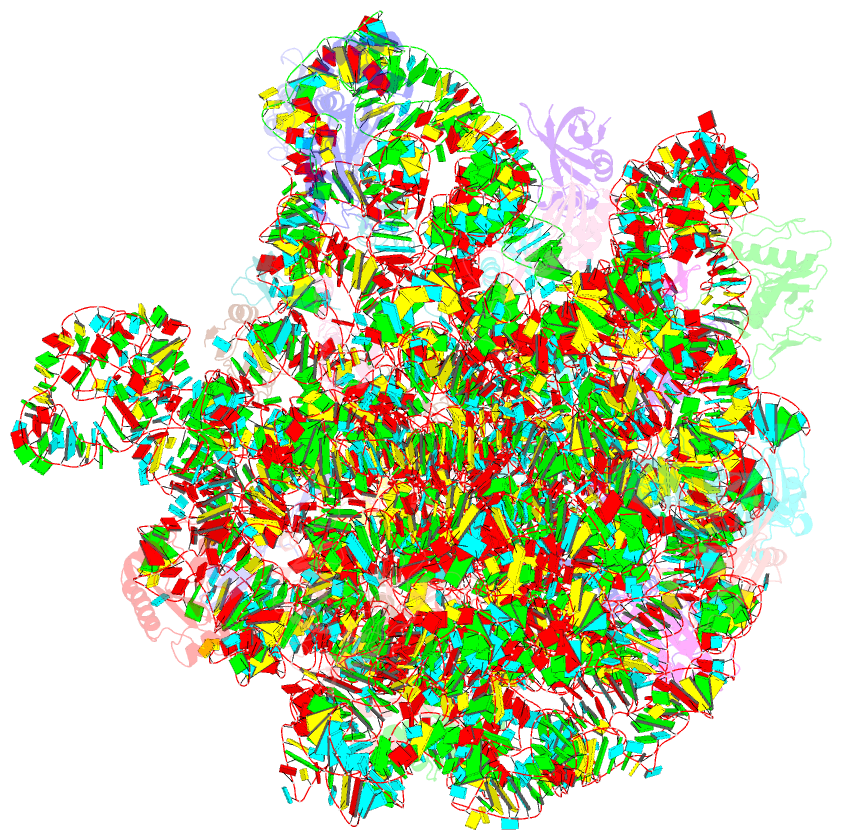Summary information and primary citation
- PDB-id
- 8rpz; SNAP-derived features in text and JSON formats;
DNAproDB
- Class
- ribosome
- Method
- cryo-EM (2.44 Å)
- Summary
- Escherichia coli 50s subunit in complex with the antimicrobial peptide api88 - conformation i
- Reference
- Lauer SM, Reepmeyer M, Berendes O, Klepacki D, Gasse J, Gabrielli S, Grubmuller H, Bock LV, Krizsan A, Nikolay R, Spahn CMT, Hoffmann R (2024): "Multimodal binding and inhibition of bacterial ribosomes by the antimicrobial peptides Api137 and Api88." Nat Commun, 15, 3945. doi: 10.1038/s41467-024-48027-4.
- Abstract
- Proline-rich antimicrobial peptides (PrAMPs) inhibit bacterial protein biosynthesis by binding to the polypeptide exit tunnel (PET) near the peptidyl transferase center. Api137, an optimized derivative of honeybee PrAMP apidaecin, inhibits protein expression by trapping release factors (RFs), which interact with stop codons on ribosomes to terminate translation. This study uses cryo-EM, functional assays and molecular dynamic (MD) simulations to show that Api137 additionally occupies a second binding site near the exit of the PET and can repress translation independently of RF-trapping. Api88, a C-terminally amidated (-CONH2) analog of Api137 (-COOH), binds to the same sites, occupies a third binding pocket and interferes with the translation process presumably without RF-trapping. In conclusion, apidaecin-derived PrAMPs inhibit bacterial ribosomes by multimodal mechanisms caused by minor structural changes and thus represent a promising pool for drug development efforts.





